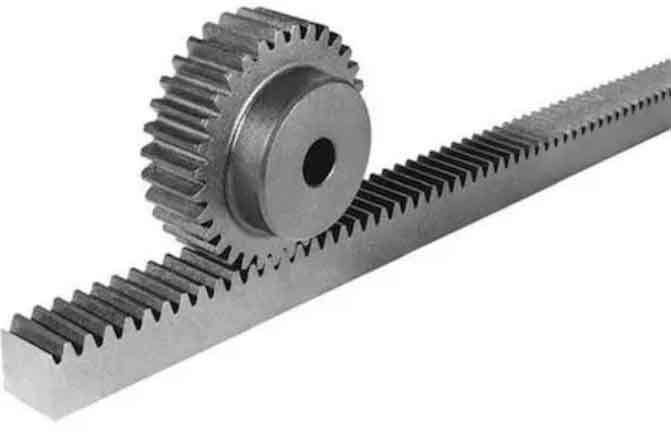
Rack and pinion gears are a type of linear motion system used to convert rotational motion into linear motion or vice versa. They consist of two main components: the rack, which is a linear gear with teeth running along its length, and the pinion, which is a small circular gear that meshes with the rack. When the pinion rotates, it moves along the rack, resulting in linear motion.
Working Principle:
The working principle of rack and pinion gears is based on the meshing of the teeth on the pinion with the teeth on the rack. When the pinion gear rotates, it engages with the teeth on the rack, causing the rack to move linearly along its axis. This linear motion can be used to actuate various mechanisms or components in a machine or system.
Applications:
Rack and pinion gears are commonly used in various applications where linear motion is required. Some of the typical applications include:
- Steering Systems: In vehicles and machinery, rack and pinion systems are widely used for steering. When the driver turns the steering wheel, the rotational motion is translated into linear motion through the rack and pinion mechanism, allowing the wheels to turn.
- Linear Actuators: Rack and pinion gears are used in linear actuators to convert rotary motion from a motor into linear motion. This is often used in automation systems, robotics, and industrial machinery for precise and controlled linear movements.
- CNC Machines: In computer numerical control (CNC) machines, rack and pinion systems are used to move the cutting tool or workpiece along a linear axis to perform machining operations.
- Elevators: Rack and pinion gears are utilized in elevator systems to move the elevator car vertically along the guide rails.
- Gantry Systems: Rack and pinion gears are used in gantry systems to move heavy loads along a linear path with high precision.
Advantages:
- Simplicity: Rack and pinion systems are relatively simple in design and can be compact, making them easy to integrate into various applications.
- High Efficiency: The meshing of the teeth in rack and pinion gears results in a high mechanical efficiency, ensuring minimal power losses during motion transfer.
- Precise Linear Motion: Rack and pinion gears offer precise linear motion with minimal backlash, making them suitable for applications that require accurate positioning.
Limitations:
- Limited Travel Distance: The linear travel distance of rack and pinion gears is limited to the length of the rack. For longer travel distances, multiple racks may be used in tandem.
- Load Distribution: Uneven load distribution on the teeth can lead to premature wear, requiring proper design and maintenance to ensure even load distribution.
In conclusion, rack and pinion gears are a fundamental linear motion system used in various applications, from steering systems in vehicles to linear actuators in automation. Their simplicity, efficiency, and precise linear motion make them a versatile choice for converting rotary motion into linear motion and finding use in numerous industrial, automotive, and mechanical applications.
